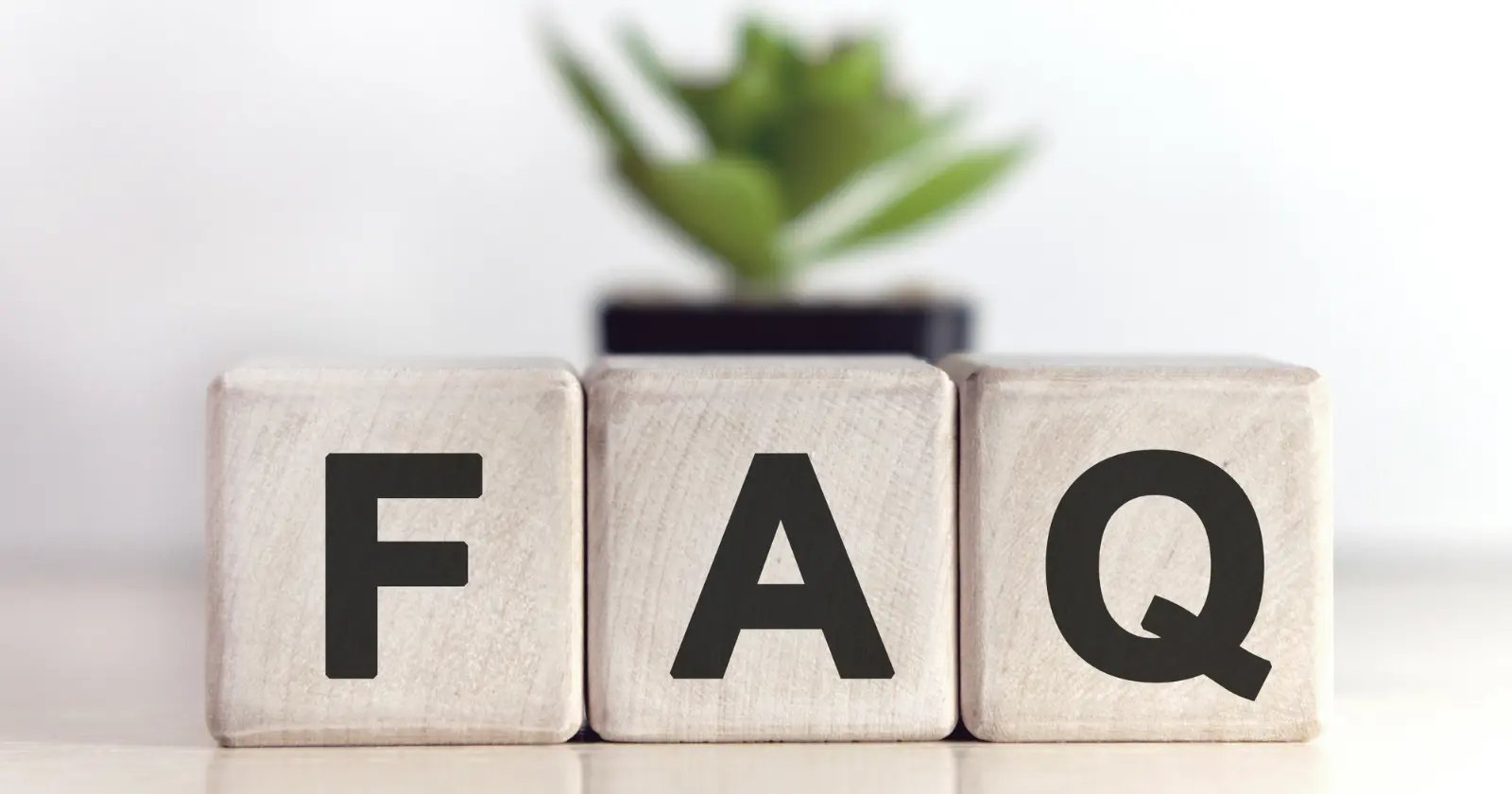If you're new to the restaurant game or a die-hard traditionalist, you might be scratching your head and wondering, "What's a POS system?" Well, it's an important piece of tech that every restaurant owner should get acquainted with. POS stands for point of sale, which is basically the moment when a guest orders and pays for their meal.
Now, some spots still get by with the old-school cash-only, pen-and-paper method that’s been around forever. But they might not realize just how much a modern POS system can streamline their operations, making the whole process faster, easier, and more successful.
So, let’s dive into what a POS system can do for your restaurant and how to pick the right one for you.
What is a POS system for a Restaurant?
Think of restaurant POS systems as the restaurant’s external brain. It’s a mix of hardware and software that runs on computers and mobile devices. This central hub of info can act as a complete restaurant management system, depending on your needs, budget, and choices.
Most POS systems handle inventory, sales data, guest info, and payments. But that’s just the beginning of what these high-tech systems can do for your restaurant.
%20(1)-1.webp?width=800&height=450&name=Eat%20(31)%20(1)-1.webp)
How does a restaurant POS system work?
Point-of-sale (POS) systems come loaded with dozens, even hundreds, of options and features that you can tweak to fit your restaurant’s needs. Most are cloud-based, which means all your data is stored on a remote server, not a computer in the restaurant.
Whenever an order is placed—whether by a server or a guest—the POS system records every detail of the transaction and syncs it with your inventory. You can use a POS system to generate various reports, which can be super helpful when you’re looking to make data-driven business decisions.
What are the benefits of a POS system?
Restaurants can streamline their operations with electronic POS software systems, which automate transactions and track essential sales data. Basic systems come with an electronic cash register and software to organize data from daily sales. By adding devices like card readers and barcode scanners, restaurants can enhance these systems’ functionality.
POS software integrates with accounting software to streamline business operations and enhance financial management by syncing sales data with accounting systems.
With the right features, POS software can help restaurants monitor pricing accuracy, inventory changes, gross revenue, and sales trends. This technology enables restaurants to spot pricing or cash flow discrepancies that could affect profits.
Additionally, POS systems that track inventory and ordering patterns help prevent issues like running out of popular menu items and allow restaurants to adjust their purchasing and marketing strategies based on customer preferences.
Pro tip: Integrate your reservation system with your POS system and get to understand your guests on a whole new level.
Common problems and solutions
While POS systems have many benefits, restaurants will encounter problems during implementation. Staff resistance to change is a big one. Training and highlighting the benefits of the system will solve this.
Technical issues will arise, so make sure you choose a reliable provider with good support. Cost is another, but focus on the long-term ROI and cost savings and it will justify the spend.
%20(1)-1.webp?width=800&height=450&name=Eat%20(32)%20(1)-1.webp)
What kind of restaurants require POS software?
It's tough to think of a food business that wouldn't benefit from the organization and precise tracking a POS system offers. But here are some types of restaurants that can especially reap the rewards:
Full-Service Restaurants: Sit-down spots have a lot of moving parts, and a POS system creates a clear channel of communication between the front and back of the house.
Quick-Service Restaurants: These places get even quicker with a POS system, especially if it includes self-service kiosks.
Food Trucks: Many POS systems are lightweight and mobile enough to work out of a truck or cart, letting these operators expand their bottom line by accepting credit cards.
Cafes and Coffee Shops: With high customer turnover and a variety of orders, a POS system helps manage everything smoothly—from tracking inventory to handling customer loyalty programs.
Bars and Nightclubs: These establishments benefit from POS systems that can handle tabs, manage drink orders efficiently, and provide detailed sales reports to keep operations running smoothly.
Bakeries and Delis: These businesses often have unique needs, like tracking batches and special orders, which a POS system can manage effortlessly.
Pop-Up Restaurants: Flexibility is key for pop-ups, and a POS system that’s easy to set up and break down can make a huge difference in their operational efficiency.
Further reading
What hardware is needed for a point-of-sale system?
Systems differ, but generally speaking, these fundamental components are the same:
POS Hardware: Think of this as the heart of your POS system. Usually an iPad or another type of tablet, it can be portable or set up more permanently at a station with a tablet stand.
Kitchen Display System: This screen is the back-of-house command center, showing cooks all the incoming orders. It’s a modern upgrade from old-school kitchen printers.
Printer: Some folks still like a good old paper receipt, so having a printer on hand is a must.
POS Terminals for Payment: This is where guests swipe, tap, or insert their credit cards to make payments.
Setting up your POS system: a simple guide
Getting your POS system up and running might seem daunting, but it's quite straightforward. Here's a step-by-step guide to help you out:
Step 1 - Install the Software: First, install the POS software on your device. This could mean downloading an app for a cloud-based system or installing software for a local setup.
Step 2 - Set Up Your Products and Prices: Next, enter your products, prices, and tax rates into the system. Make sure everything is accurate so your transactions go smoothly.
Step 3 - Connect to Other Systems: If you use other software for accounting, customer management, or inventory, link them to your POS. This makes everything work together seamlessly.
Step 4 - Train Your Team: Spend some time training your staff on how to use the new system. They should know how to handle sales, returns, and inventory management.
Step 5 - Test Everything: Run some test transactions to ensure everything works correctly. This helps catch any issues before you start using the system with real customers.
Step 6 - Start Using Your POS: Once everything is set up and tested, you're ready to go. Start using your POS system in your daily operations.
%20(1)-1.webp?width=800&height=450&name=Eat%20(33)%20(1)-1.webp)
Basic features of POS software
POS software acts as the command center for your restaurant. At a basic level, it helps you find items on your menu and ring up sales. More advanced point-of-sale solutions offer additional tools like sales reporting, customer engagement software, inventory management, and more. They also handle routing funds to your bank account after each sale.
Some POS solutions, like Square, Toast, and Lightspeed come with the features listed below. Other systems might require external software to provide the same functionality.
Payment processing simplified
Payment processing is a key function of any POS system. When a customer buys something or pays for a service, your POS system takes care of the transaction seamlessly.
Here are the different types of payments a POS system might handle:
-
Cash: The traditional way
-
Secure online payments: For purchases on your eCommerce site
-
Magstripe credit cards: Swipe and go
-
Chip cards: Credit cards with an embedded chip for added security
-
Contactless payments: Tap-to-pay cards or mobile wallets like Google Pay or Apple Pay
-
Card-not-present transactions: For when the customer and their card aren't physically present, such as online checkouts
Computer POS: simple and flexible
Being able to take payments without extra hardware, like a register or terminal, can be a game-changer for some businesses. With a computer POS system, you get all the benefits of an external POS terminal right on your computer. This setup is perfect for accepting card-not-present payments, offering a great alternative to invoicing or waiting for checks in the mail.
Your computer becomes the only hardware you need to accept payments. You can also send payment links via text, take payments over the phone, or manually key in card numbers. And if you ever need extra hardware like a printer, card reader, or item scanner, you can easily add those too.
%20(1).webp?width=800&height=450&name=Eat%20(35)%20(1).webp)
Management of inventories
Inventory management software helps you keep track of all your products. Some automated systems even connect with your sales data to alert you when stock is running low.
Customer relationship management (CRM)
A CRM tool integrated with your POS software lets you see what customers bought and when. This information helps you personalize your communications, marketing, and customer service.
Employee management
Team management software lets you track when employees are working and how they're performing. Employees can clock in and out, and some systems offer permission controls for task access.
POS reports
POS reports provide a clear snapshot of your sales and earnings. These insights help you sell more and make smarter business decisions.
Receipts
Receipts simplify processing refunds and provide a digital or paper trail for purchases. They also give your business a more professional appearance.
Tipping support
For restaurants and service professionals, tips are important. POS solutions that allow digital tipping during checkout increase the likelihood of customers leaving tips.
%20(1)-1.webp?width=800&height=450&name=Eat%20(36)%20(1)-1.webp)
What is the cost of a POS system?
The POS system cost can vary widely based on several factors. Here’s a quick breakdown:
Subscription Fees: Cloud-based POS systems usually come with subscription fees, which can be billed monthly or annually. Prices range from free for basic systems to over $100 per month for advanced features.
Number of Locations: If you have multiple stores or restaurants, the cost will increase. Each location requires its own hardware and software setup, adding to the overall expense.
Payment Processing Fees: Most POS providers charge a fee for processing credit card payments. This fee is typically a percentage of each transaction plus a fixed amount, and it can vary significantly between providers.
So, what’s the bottom line? The cost of a POS system depends on your specific needs and the provider you choose. There’s no one-size-fits-all answer, but understanding these factors can help you estimate your expenses.
10 POS trends that are changing restaurants
The restaurant industry is going digital and it’s all thanks to POS technology. Let’s take a look at the 10 trends that are changing how restaurants operate and interact with customers:
Cloud POS
The move from traditional on-premise POS to cloud POS is happening. This means real-time data, remote management and automatic updates for more efficiency.
Mobile POS: powering staff and customers
Mobile POS devices are changing restaurant operations. From table ordering to queue management, these devices are improving customer experience and staff workflow.
Contactless ordering and payment
Driven by health and safety contactless ordering and payment is a must. This includes QR code menus, mobile ordering and digital payment.
Kitchen display systems (KDS) integration
KDS integration with POS systems reduces order errors and improves order fulfillment times. This means faster service and happier customers.
Data for restaurant success
POS systems give you sales data, customer preferences, and inventory data. Use this data to make data-driven decisions, optimize menus, and increase profitability.
Online ordering and delivery integration
Integrating online ordering and delivery platforms into the POS system is key to reaching more customers. This trend is driven by the rise of food delivery.
Loyalty programs and customer relationship management (CRM)
Loyalty through rewards and personalization is key. Integrating CRM into the POS system allows you to collect customer data and tailor your marketing.
Self-service kiosks
Self-service kiosks can take orders during peak hours, reduce wait times and improve order accuracy. They also offer upsell and cross-sell opportunities.
Integration with online food delivery platforms
Partnering with popular food delivery platforms is key to reaching new customers. Integration with the POS system means smooth order management and accurate revenue tracking.
AI and machine learning for predictive analytics
Using AI and machine learning to analyze POS data can give you insights into customer behavior, inventory management and staff scheduling. This technology helps optimize restaurant operations and increase profitability.
These trends show how fast-paced the restaurant industry is. By adopting these POS trends restaurants can be more efficient, have happier customers and grow their business.
With a better understanding of POS systems, you’re ready to find the right POS solution for your business, no matter what or where you sell.
FAQ

What is a POS transaction?
A POS transaction occurs when a customer finalizes a purchase and makes a payment for goods or services. This can involve various payment methods, including cash, debit cards, credit cards, mobile payments, and loyalty points.
To complete a purchase, authentication is often required, such as a PIN, signature, or fingerprint scan for newer mobile payment technologies. This authentication data is sent through ATM networks to the issuing bank, which either authorizes or denies the transaction based on the type and the available funds in the cardholder’s account.
In some places, like California and Westchester County in New York, laws require a customer-facing display at the point of sale. This display allows customers to see the prices of items before they pay.
What is a POS register system?
Before modern POS systems, businesses used POS cash registers, which had minimal technology and could only add up purchases and store cash.
Today, POS register systems are connected to cloud-based POS software.
They still include a cash drawer and a card payment terminal, but the software controls these components. Modern systems also feature a receipt printer, a POS terminal (often an iPad), and may include additional devices like barcode scanners and customer-facing displays, depending on the business needs.
What is a POS payment method?
A POS payment method is any way customers can pay at a point of sale.
Common methods include:
-
Cash
-
Credit and debit cards (tap, chip, and swipe)
-
Digital wallets (e.g., Apple Pay, Google Pay)
-
Gift cards
Not all POS systems support every type of payment, and some require additional equipment for certain methods, like swipe cards. A POS system that supports tap payment methods enables contactless payments.
What does POS mean in restaurants?
In restaurants, the POS system is the central hub of operations. It manages sales, payment processing, online ordering, inventory, staff management and more. Without a POS system, these functions would need to be managed individually, leading to inefficiencies and potential oversights.
What are examples of POS systems?
POS systems vary widely in their setups and user experiences. Here are a few examples:
McDonald's: Many locations now feature self-order screens where customers place orders and pay at a terminal or the front counter. The POS system powers these screens, the front counter registers, and the kitchen display systems.
H&M: Shoppers bring their purchases to a central checkout counter where items are scanned and bagged. The POS system at the counter updates inventory information through barcode scans and physical counts.
Apple: Apple stores use mobile devices with card reader accessories carried by employees. These devices contain inventory and customer data, allowing transactions to occur anywhere in the store. This mobile approach essentially turns the entire store into a point of sale.
How do I choose the right POS system for my restaurant?
Choose a POS system built specifically for restaurants, offering features like table management, inventory tracking, menu customization, and real-time reporting. Look for ease of use, reliable support, and seamless integrations with payment processors and online ordering platforms.
What's the difference between cloud-based and legacy POS systems?
Cloud-based POS systems run on the internet and allow remote access, real-time updates and lower hardware costs. Legacy systems are offline, hardware dependent and harder to update or scale.
What are the typical monthly fees for restaurant POS systems?
Most restaurant POS systems cost $50–$300/month, depending on features, number of terminals and support. Some also charge per transaction or for extra integrations.
Can the POS system work with third-party delivery apps like UberEats and DoorDash?
Yes, most modern restaurant POS systems integrate with delivery apps like UberEats, DoorDash and Grubhub through middleware or direct APIs.
How does restaurant POS software handle inventory management?
POS software tracks ingredient usage, updates stock levels automatically with each order and alerts you when items run low, helping reduce waste and control food costs.
How does the POS system handle split bills and table management?
Restaurant POS systems let you split bills by item, seat or percentage. They also support table assignments, merging and transfers to streamline dine-in service.
Is the restaurant POS system PCI compliant for payment processing?
Yes, leading restaurant POS systems are PCI DSS compliant, ensuring secure handling of credit card payments and protecting customer data.
How does the POS system work during internet outages?
Cloud-based POS systems offer offline mode, allowing you to continue taking orders and processing payments locally until connectivity is restored.
Which POS system works best for food trucks and mobile restaurants?
Food trucks benefit most from cloud-based POS systems with mobile hardware, offline mode and simple menus. Options like Square for Restaurants or Toast Go are popular for mobile setups.














.webp?width=200&name=v2-15mknc-qpw1b%20(1).webp)
.webp?width=200&name=v2-15kqni-p0exl%20(1).webp)
-1.png?width=1812&height=1072&name=TripAdvisor%20%26%20More%20Bookings%20(1)-1.png)
-2.png?width=1812&height=1072&name=Google%20Bookings%20(1)-2.png)


-1.png?width=200&name=TripAdvisor%20%26%20More%20Bookings%20(1)-1.png)
-2.png?width=200&name=Google%20Bookings%20(1)-2.png)
-1.png?width=200&name=Instagram%20Bookings%20(1)-1.png)
-1-png.webp?width=200&name=Facebook%20Integration%20Rectangle%20(1)-1-png.webp)







.webp?width=200&name=download%20(1).webp)
%20(1)-2.webp?width=200&name=Eat%20(34)%20(1)-2.webp)
%20(1)-2.webp?width=200&name=Eat%20(18)%20(1)-2.webp)




%20(1)-1.webp?width=670&height=440&name=Eat%20(31)%20(1)-1.webp)


.webp?width=314&height=175&name=image2%20(5).webp)


.webp?width=144&height=72&name=Eat%20App%20Logo%20(3).webp)